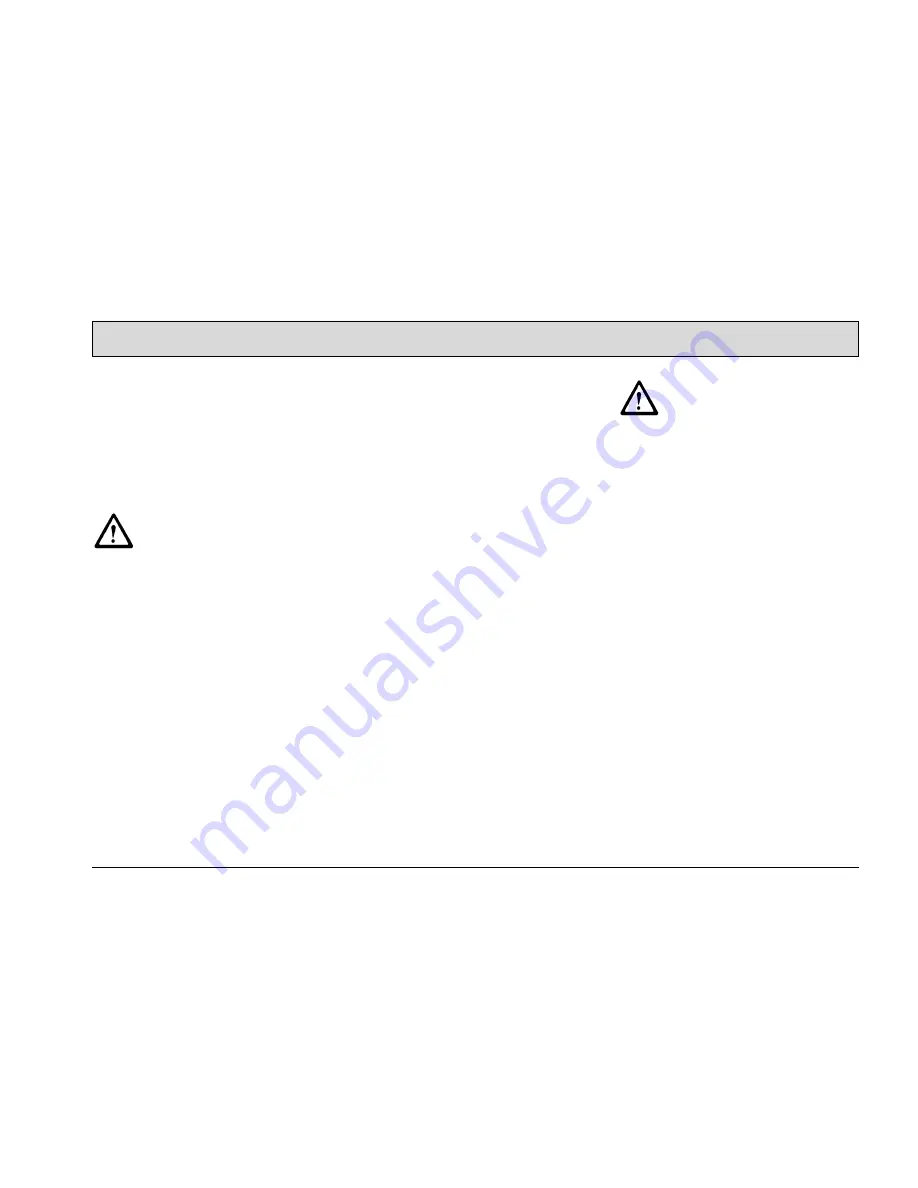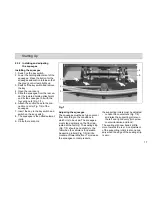
23
Operation
3.1.6 Traction drive
The traction drive is provided by a drive
motor on the steerable front wheel. The
driving speed can be continuously reg-
ulated via the accelerator by means of
the electronic drive control (pulse con-
tact control). The axle gear is a gear
train running in an oil bath.
In the case of faults involving
the traction drive, stop the ve-
hicle immediately and remove
the key from the key switch!
3.1.7 Brakes
The Hakomatic B1050 is equipped with
a service brake and a parking brake.
The service brake relates to a drum
brake which acts hydraulically on the
rear wheels. It is actuated by a foot ped-
al. The parking brake is actuated me-
chanically via brake cables. It is applied
by means of the foot pedal to the left of
the steering column and released using
the safety catch in the steering column.
3.1.8 Batteries and charger
The vehicle is equipped with low-main-
tenance batteries. The batteries con-
cern 18 individual cells of the 80 PzS
type (PzS = armor plate insulation) and
an output of 36 Volt/480 Ah
5
. They are
located in a steel trough (trough battery)
(Fig. 13/2). The advantage here is the
quick and simple removal and installa-
tion processes using a fork-lift truck or
lifting gear, particularly in multi-shift op-
eration. The steel trough is provided
with the necessary fitting holes
(Fig. 13/1). The trough battery is provid-
ed with a battery water top-up system
and fill level indicator (Fig. 13/3) for
each individual cell and with aquamatic
plugs
(Fig. 13/4) to enable simple refilling of
water.
To ensure protection against total dis-
charge, the Hakomatic B1050 is
equipped with a total discharge signal
transducer (TSG). It is integrated in the
electronic system and set up at the fac-
tory for PzS batteries (service indicator:
No. 5).
If other batteries are used, the
total discharge signal trans-
ducer must be adjusted. This
adjustment work should only
be performed at an authorized
Hako service center.
The trough battery is provided with a
connection cable with battery plug
(Fig. 13/5). When the battery plug is
plugged into the vehicle socket (Fig. 13/
6), the vehicle is ready to operate. To
charge the trough battery, insert the
battery plug in the charger. The vehicle
includes a battery charger providing
• 36 Volt/60 ampere
• IUIa characteristic curve
• 230 V power supply line
Pay attention to the safety information
titled "Information on driving batteries“,
supplementary sheet 88-60-2556, en-
closed with each battery.
















































